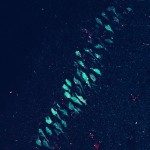Link to Pubmed [PMID] – 19484221
Psychopharmacology (Berl.) 2009 Sep;205(4):613-24
RATIONALE: The endocannabinoid system has been recently identified as having critical involvement in drug taking and relapse phenomenon for various drugs of abuse and notably nicotine. The endocannabinoid system consists of endocannabinoids (such as anandamide), their target receptors (mostly cannabinoid CB(1) receptors), and the enzymes that degrade those endocannabinoids (fatty-acid-amide-hydrolase (FAAH) for anandamide). It has been recently identified that the utility of rimonabant for smoking cessation may be limited by its psychiatric side effects. Therefore, there is a great need to develop alternative ways of modulating the cannabinoid system that will be better tolerated.
OBJECTIVE: The aim of the study was to explore the effect of inhibiting FAAH enzyme by URB597 on nicotine self-administration under a progressive ratio schedule and reinstatement of nicotine seeking, in comparison with the effect of the CB(1) antagonist rimonabant.
RESULTS: Rimonabant, but not URB597, dose-dependently reduced the break point for nicotine self-administration, an effect that was stable over repeated administrations. Rimonabant and URB597 significantly decreased the reinstatement of nicotine seeking induced either by presentation of nicotine-associated stimuli or by nicotine priming.
CONCLUSIONS: These results indicate that the integrity of the CB(1) receptors is necessary for the incentive motivation of the rats for nicotine and that FAAH inhibition may be as effective as CB(1) receptor blockade to prevent reinstatement of nicotine seeking. Since FAAH inhibition present antidepressant and anxiolytic properties in rodents, targeting the FAAH may represent a novel strategy to prevent relapse for tobacco smoking that may be better tolerated than rimonabant.

